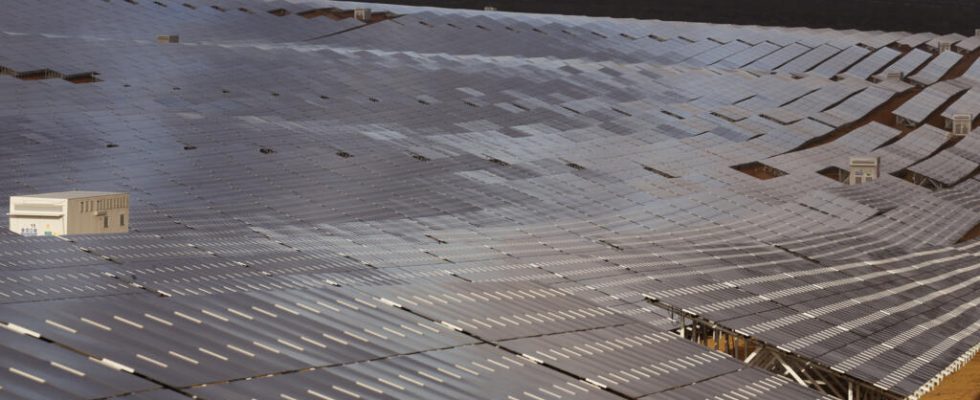Global investments in solar energy are expected to exceed the amounts invested in oil extraction in 2023 for the first time, the International Energy Agency (IEA) said on Thursday.
Driven by the energy and climate crises, investment in decarbonized technologies is expected to reach $1.7 trillion in 2023, when around $1 trillion will go to oil, gas and coal, according to IEA annual report dedicated to energy investments.
These flows, which relate to renewables (wind, solar, etc.), nuclear, electric cars, heat pumps, etc. should grow by 24% per year over the period 2021-23. At the same time, the amounts devoted to hydrocarbons and coal continue to increase by 15% annually. “ Clean energy is advancing rapidly, faster than many people imagine underlines the director of the IEA, Fatih Birol: for every dollar invested in fossil fuels, about 1.7 dollars go to clean energies. Five years ago, this ratio was 1-1 “.
Especially, “ solar is the star “, notes the report:” more than $1 billion a day is expected to go to solar investments in 2023 ($380 billion for the full year), pushing that amount beyond that invested in oil production for the first time “, report the experts of the Paris-based agency. Against 370 billion dollars planned for oil production (exploration and extraction).
Another example is that global investment in electricity production is now 90% dominated by low-carbon technologies. The volatility of fossil fuel prices, reinforced by the war in Ukraine, and the support measures taken by the European Union, China, Japan or the United States have reinforced the trend.
Stop investments in hydrocarbons for carbon neutrality
However, the IEA issues several warnings, first on the ultra-dominance of China and advanced economies in this movement. Despite some gleams (solar in India, Brazil, the Middle East), elsewhere investments are struggling, warns the agency, an offshoot of the OECD, which calls on the international community to mobilize on this subject.
Another major downside pointed out by the IEA: oil and gas exploration and exploitation expenditure is expected to grow by 7% in 2023, a return to 2019 levels which takes the world away from the trajectory towards carbon neutrality in the middle of the century. The IEA had, in 2021, in a very noticeable scenario on carbon neutrality, underlined the need to immediately abandon any new fossil fuel exploitation project. Carbon neutrality, which implies not emitting more greenhouse gases than we can absorb, aims to keep global warming below 1.5°C in order to avoid major and irreversible impacts. .
However, coal alone saw its demand reach an all-time high in 2022, and investment in this sector in 2023 should be six times higher than what the IEA recommends for 2030 if we want to move towards neutrality. … The oil and gas giants last year directed the equivalent of less than 5% of their production expenditure towards low-carbon energies (biogas, wind power, etc.) and carbon capture. Even if it is a little higher for the European majors, this proportion has barely increased overall compared to 2021, notes the IEA.
Read also : Today’s Economy – Renewable energies in Africa: an untapped potential
(With AFP)
